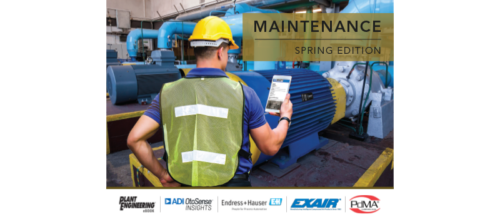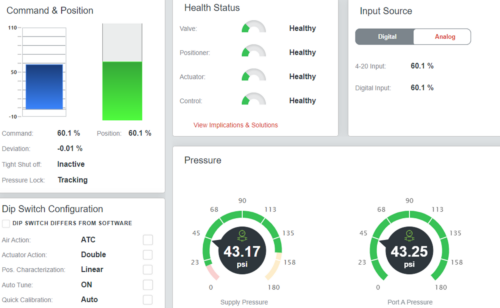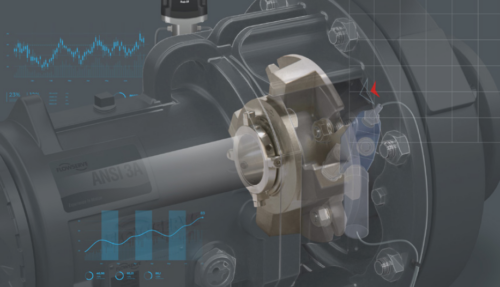Three ways to transform a manufacturing facility’s management and operations
Bombardier Aerospace, a manufacturer of commercial and business aircraft, was consistently over budget and laying off employees before instituting three key management and operational changes to improve their facility.
How do you transform an entire organization, tailor innovation to meet evolving demands, and continuously build this momentum for change? At Bombardier Aerospace, inspiring leadership, employee engagement, effective performance measures, and accountability at all levels drive the non-stop performance gains. The manufacturer of commercial and business aircraft employs approximately 4,000 people at its Toronto operation.
The company’s approach to problem-solving and an empowerment system drew particular acclaim from the AME Manufacturing Excellence Award assessment team. The assessment team also noted accountability down to the shop floor level and a shared understanding about the need for agility to meet new visions.
The case for change: A blue sky vision
In 2008, the Bombardier Toronto site had a rich history and many improvement opportunities. Layoffs had decreased employee ranks. “We were constantly late and over budget,” said Franck Lefebvre, director of quality and the Achieving Excellence System (AES). “Customers were disengaged. We needed a focus on quality the first time, employee engagement, organizational and management alignment and communications effectiveness. Leadership developed what Lefebvre described as a “blue sky vision” for transformation: creating an amazing customer experience, “a bright landscape of possibilities.”
The transformation model targeted three key areas:
- The technical system
- The management infrastructure (operations, hardware, governance, communications and measurement systems)
- The employees’ mindsets/behaviors (effective communications and teamwork, asking questions and solving problems).
Evolution of the achieving excellence system
The company also initiated a set of common practices, values, and cultural changes that evolved into AES. Designed to foster management-employee teamwork, this robust system encompasses common processes, standardized elements (key enablers and tools), common work practices in all business units and manufacturing sites/functions, aligned metrics and plans.
AES encourages a shift from thinking about “my work area” to “Team Bombardier.” This continuous improvement (CI) foundation reflects a Plan/Do/Check/Act (PDCA) mindset, empowering employees in work area teams and at all levels to initiate, implement, and oversee improvements. It created “an army of problem-solvers,” Lefebvre said.
Making a Difference
“It’s making a difference,” Lefebvre said of the enterprise-wide CI progress. “Employees are engaged; people take responsibility for their actions. We’re expanding. We’ve hired back most of the workers who had been laid off, and we will be hiring more people.”
Thanks to more than $40 million invested in physical upgrades, the Toronto site has been refreshed and updated. Productivity gains reflect the operation’s strong focus on safety, quality and other improvements through employees’ CI engagement.
On-time deliveries stand at nearly 100 percent. Dispatch reliability of new aircraft rose significantly (now at 99 percent for all new aircraft). The company is applying the AES system to boost in-service reliability of its entire fleet of aircraft, some of which were built 30 years ago.
Meanwhile, initiatives by engaged employees throughout the facility helped to decrease costs and improve supplier reliability. Engagement survey participation and scores, as measured by the Hay Group, have trended upward.
Through the site’s supplier quality management system (Bombardier Aerospace Supplier Excellence or BASE), ratings track suppliers’ performance and CI standings. Nonconformance management delivery and defect ratings, product change requests and other areas are monitored.
Management Systems
Progress continues on many fronts. At the leadership level, the Toronto site has a master plan to ensure that it’s aligned with the Bombardier Commercial Aircraft (BCA), Bombardier Business Aircraft (BBA) and Bombardier Aerospace (BA) strategic plans. Employing balanced scorecards, leadership tracks progress against its strategic vision.
Incremental performance improvements and balanced scorecard targets are graduated to ensure that the Toronto site continuously progresses toward world-class excellence. Its hoshin kanri (A3X) system helps to direct resources to meet the master plan (the right people working on the right projects, for example). Using the balanced scorecard, employees track progress toward targets in six areas: safety, quality, productivity, human development, cost and AES maturity.
Cascading Balanced Scorecard Data
Balanced scorecards cascade from the operations program level to work centers in all functions, from production areas to finance, sales and marketing, supply chain, logistics, quality assurance, human resources, methods engineering, etc. More than 150 natural teams at the Toronto site are linked through AES.
A communications zone for each team includes a balanced scorecard plus daily lead metrics and updates on performance against the top three issues/opportunities, master plans, employee engagement plans, problem-solving and team boards and other communications.
Nonmanagement employees are empowered to identify opportunities for incremental improvements in their work areas. Their initiatives to craft and implement solutions are formally recognized through the Xcell program, nurturing employee engagement and empowerment.
Employee Communications/ Development
Employees gain timely updates about their progress using standardized work, value stream mapping (VSM) and other CI tools and practices. Quarterly results cascades are presented to all employees by their managers or functional leader. In regular all-manager meetings (AMMs), middle- and upper-level managers focus on progress reflected in balanced scorecards and master plans, also developing strategies for achieving world-class manufacturing status. Updates on the business are shared regularly with managers by Simon Roberts, vice president and site general manager.
An employee-developed newsletter, televised information and all-employee emails share site and company updates. Special company events include a charity hockey game, a barbecue family day and annual accomplishment awards.
The site’s Achieving Excellence Academy (AEA) offers training programs designed to develop leadership, problem-solving and coaching capabilities, tailored according to current issues. Its learn-practice-do approach is reflected in leadership, master planning, problem-solving, policy deployment and other courses.
With an average age of 54 among manufacturing and engineering employees, the Toronto site leadership recognized that retirement eligibility with full pension options will dramatically change its labor profile some years down the road. Its $1 million-plus Bombardier Learning Centre, developed to meet this challenge, is modeled after a community college. Employees are immersed in training programs at a technologically advanced facility, insulated from daily work routines.
Health, safety and environment
An integrated Health, Safety and Environment (HSE) management system provides clear performance targets and monitors related CI progress. HSE training is offered through ongoing programs and to new/recalled employees and contractors. The site received an award for the lowest accident frequency rate among Bombardier facilities. Employees’ implemented improvements include a wing positioning system and an underbelly lighting system, providing more robust, user-friendly practices.
Working with a waste-to-energy facility allowed Toronto site employees to achieve zero waste to landfill in 2011. The recycling rate continues to rise, greenhouse gas emissions are decreasing and the site eliminated hazardous materials such as trichloroethylene and methyl ethyl ketone.
Going first class
“Customers recognize us as a first-class facility,” Lefebvre said.
Customer satisfaction metrics continue to rise, along with on-time delivery performance. Profit margins showed steady improvement from 2009 to 2010 through 2011. Positive changes throughout the site enable more agile, flexible capabilities to meet future market demands, also netting its mandate for new Bombardier Global 7000 and 8000 business jets.
Lea Tonkin, president of Lea Tonkin Communications in Woodstock, Ill., is the former editor in chief of Target and Target Online.This post originally appeared in Target Magazine [link: https://www.ame.org/target/articles/2014/bombardier-aerospace-soaring-world-class-style]. Edited by Jessica DuBois-Maahs, associate content manager, CFE Media, jdmaahs@cfemedia.com.
Do you have experience and expertise with the topics mentioned in this content? You should consider contributing to our CFE Media editorial team and getting the recognition you and your company deserve. Click here to start this process.





